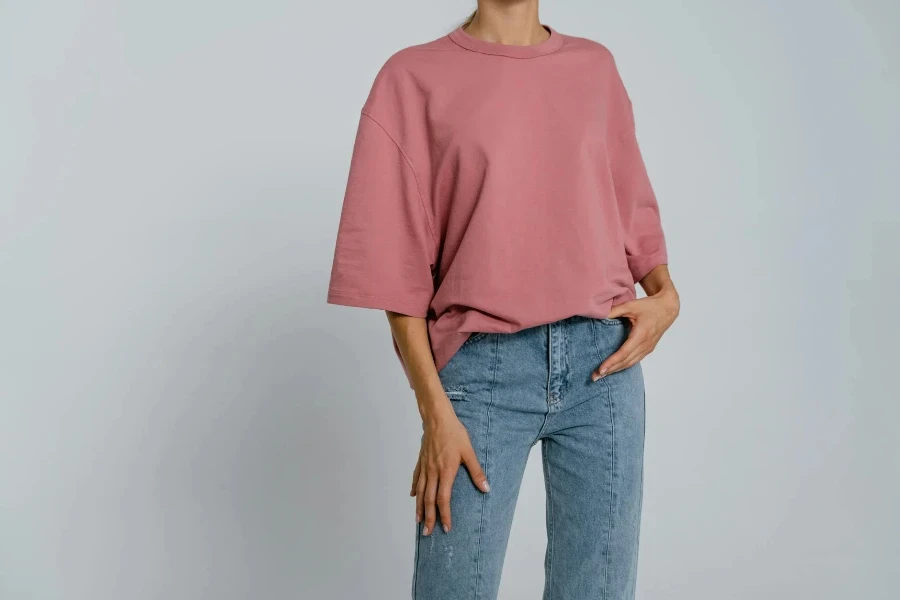Skinny jeans have become a staple in wardrobes around the world, transcending age, gender, and cultural boundaries. Their sleek, form-fitting design has made them a favorite among fashion enthusiasts and everyday wearers alike. This article delves into the market overview of skinny jeans, exploring their global demand, key markets, and the economic impact on the apparel industry.
Table of Contents:
– Market Overview of Skinny Jeans
– The Evolution of Skinny Jeans Design
– Materials and Fabrics in Skinny Jeans
– Fit and Functionality
– Cultural and Aesthetic Influences
Market Overview of Skinny Jeans

Global Demand and Popularity
Skinny jeans have seen a remarkable rise in global demand over the past decade. According to a report by Research and Markets, the denim jeans market, which includes skinny jeans, was estimated at USD 42.81 billion in 2023 and is projected to reach USD 67.31 billion by 2030, growing at a CAGR of 6.67%. This growth is driven by increased spending capacity, a higher per capita consumption of denim jeans, and a growing acceptance of casual wear in various settings, including the workplace.
Key Markets and Demographics
Skinny jeans have a broad appeal across different demographics and regions. In the Americas, the market is highly developed due to a well-established denim manufacturing sector and the influence of social media in promoting new designs and styles. The United States, in particular, is a significant market, with consumers showing a strong preference for both classic and innovative denim styles.
In Europe, the Middle East, and Africa, the market is rapidly developing. Increasing consumer expenditures on outdoor clothing products and a strong inclination towards the latest fashion trends are driving the demand for skinny jeans. According to the Observatory of Economic Complexity (OEC), Asian economies, including China, Pakistan, India, Thailand, Japan, and Vietnam, are major exporters of denim cotton, creating lucrative opportunities for market players to enhance their presence in the region.
The Asia-Pacific region is a massive producer and exporter of raw materials, including denim and cotton. This region is experiencing significant growth due to economic development, urbanization, and a rising middle-class population with increasing disposable income. The growing interest in Western fashion trends and the availability of a wide range of denim products are further propelling the market.
Economic Impact on the Apparel Industry
The economic impact of skinny jeans on the apparel industry is substantial. The denim jeans market, including skinny jeans, is a significant contributor to the global apparel market. The market’s growth is driven by several factors, including product innovations, rising consumer awareness, and the influence of social media and fashion bloggers.
According to Research and Markets, the premium denim jeans market, which includes high-end skinny jeans, reached US$ 9.4 billion in 2023 and is expected to grow to US$ 14.1 billion by 2032, exhibiting a CAGR of 4.6%. This growth is fueled by rising consumer affluence, design advancements, and the emergence of cultural trends that emphasize comfort, style, and brand prestige.
The economic impact is also evident in the employment opportunities created by the denim industry. From manufacturing to retail, the denim jeans market supports millions of jobs worldwide. Additionally, the market’s growth has led to increased investments in research and development, resulting in innovations in fabric technology and sustainable practices.
The Evolution of Skinny Jeans Design

From Classic to Contemporary Styles
Skinny jeans have undergone a significant transformation since their inception. Initially, they were characterized by their tight fit and minimalistic design, which became a staple in the wardrobes of many during the early 2000s. The classic skinny jeans were often made from denim with a slight stretch, allowing for a snug fit that accentuated the wearer’s silhouette. Over time, designers began to experiment with different cuts, washes, and embellishments, leading to a more diverse range of styles.
In recent years, the resurgence of early and mid-2000s fashion has brought skinny jeans back into the spotlight. According to a report by EDITED, the upcoming Amy Winehouse biopic and the reexamination of trends from the King Kylie era have contributed to this revival. Designers are now incorporating contemporary elements such as high-waisted cuts, distressed details, and unique washes to modernize the classic skinny jeans. This blend of nostalgia and innovation has made skinny jeans a versatile and fashionable choice for today’s consumers.
Influences of High Fashion and Streetwear
High fashion and streetwear have played a crucial role in shaping the design of skinny jeans. Luxury brands like Balenciaga, Alexander McQueen, and Miu Miu have showcased skinny jeans on their runways, signaling their return to the fashion forefront. These high-fashion interpretations often feature bold designs, intricate detailing, and premium materials, elevating the status of skinny jeans from casual wear to high-end fashion.
Streetwear, on the other hand, has introduced a more relaxed and edgy approach to skinny jeans. Influences from the Indie Sleaze movement and the popularity of Tumblr girls have led to the incorporation of elements such as ripped knees, frayed hems, and graphic prints. This fusion of high fashion and streetwear has resulted in a diverse range of skinny jeans that cater to various style preferences and occasions.
Customization and Personalization Trends
Customization and personalization have become significant trends in the fashion industry, and skinny jeans are no exception. Consumers are increasingly seeking unique and personalized pieces that reflect their individual style. Brands have responded by offering customization options such as monogramming, patchwork, and bespoke fits.
Retailers like Good American have highlighted the versatility of their skinny jeans, promoting features like one-size-fits-four stretch and bum sculpting capabilities. This focus on fit and personalization has made skinny jeans more appealing to a broader audience, allowing consumers to find the perfect pair that suits their body type and style preferences.
Materials and Fabrics in Skinny Jeans

Popular Fabrics and Their Benefits
The choice of fabric plays a crucial role in the comfort and durability of skinny jeans. Traditionally, denim has been the primary material used, known for its durability and classic appeal. However, the addition of elastane or spandex has become common, providing the necessary stretch for a comfortable fit. This blend of materials ensures that skinny jeans maintain their shape while allowing for ease of movement.
High-quality denim with a slight stretch is often favored for its ability to provide a snug fit without compromising on comfort. Additionally, fabrics like cotton-polyester blends are popular for their breathability and moisture-wicking properties, making them suitable for various weather conditions.
Sustainable and Eco-friendly Options
Sustainability has become a significant concern in the fashion industry, leading to the development of eco-friendly materials for skinny jeans. Brands are increasingly adopting sustainable practices, such as using organic cotton, recycled fibers, and environmentally friendly dyes. These materials not only reduce the environmental impact but also offer benefits like improved breathability and reduced skin irritation.
Innovations in Fabric Technology
Advancements in fabric technology have led to the development of innovative materials that enhance the performance and comfort of skinny jeans. Technologies like moisture-wicking, anti-odor, and temperature-regulating fabrics have become increasingly popular, providing added functionality to traditional denim.
For instance, brands like Hudson Jeans have incorporated stretch properties and bum sculpting capabilities into their designs, offering a perfect blend of style and comfort. These innovations not only improve the wearability of skinny jeans but also cater to the growing demand for functional and versatile clothing.
Fit and Functionality

Understanding Different Fits and Cuts
The fit and cut of skinny jeans are essential factors that determine their overall appeal and comfort. While the classic skinny fit remains popular, variations such as high-waisted, mid-rise, and low-rise cuts offer different styling options. High-waisted skinny jeans, for example, provide a flattering silhouette by cinching the waist and elongating the legs, making them a favorite among many consumers.
According to EDITED, almost 40% of womenswear bestsellers were high-waisted, with Zara’s 80s range performing well. This indicates a preference for high-waisted cuts, which offer both style and comfort. Understanding these different fits and cuts allows consumers to choose the perfect pair of skinny jeans that complement their body shape and personal style.
Performance and Comfort Features
Performance and comfort are critical considerations for consumers when purchasing skinny jeans. Features like stretchability, breathability, and moisture-wicking properties enhance the overall wearability of skinny jeans. Brands are increasingly focusing on these aspects to provide a comfortable and functional product.
For instance, River Island’s bum sculpt skinny jeans registered majority SKU sell-outs within two weeks of launching, highlighting the importance of comfort and shape in driving consumer demand. By incorporating performance features into their designs, brands can cater to the needs of modern consumers who prioritize both style and comfort.
Seasonal Variations and Adaptations
Skinny jeans are a versatile wardrobe staple that can be adapted for different seasons. During colder months, thicker fabrics and fleece-lined options provide added warmth, while lighter materials and cropped cuts are ideal for warmer weather. Seasonal variations in color and wash also play a role in keeping skinny jeans relevant throughout the year.
Dark rinses such as indigos, greys, and blacks were popular for both men and women, making them suitable for fall and winter collections. By offering seasonal adaptations, brands can ensure that skinny jeans remain a year-round favorite among consumers.
Cultural and Aesthetic Influences

Heritage and Historical Significance
Skinny jeans have a rich heritage and historical significance that has contributed to their enduring popularity. Originating in the 1950s as a symbol of rebellion and youth culture, skinny jeans have evolved to become a fashion staple across generations. Their association with iconic figures like James Dean and rock ‘n’ roll culture has cemented their place in fashion history.
The resurgence of early and mid-2000s fashion has further highlighted the historical significance of skinny jeans. The upcoming Amy Winehouse biopic and the reexamination of trends from the King Kylie era have brought skinny jeans back into the spotlight, showcasing their timeless appeal.
Impact of Pop Culture and Celebrities
Pop culture and celebrities have a significant influence on fashion trends, and skinny jeans are no exception. Celebrities like Gigi Hadid and Emily Ratajkowski have been spotted wearing skinny jeans, contributing to their popularity among fans and fashion enthusiasts. Social media platforms like TikTok have also played a role in promoting skinny jeans, with trends and challenges featuring this iconic style.
Conclusion
The evolution of skinny jeans design, from classic to contemporary styles, highlights their enduring appeal and versatility. Influences from high fashion and streetwear, along with trends in customization and personalization, have kept skinny jeans relevant in the ever-changing fashion landscape. With advancements in fabric technology and a focus on fit and functionality, skinny jeans continue to offer both style and comfort. As cultural and aesthetic influences shape consumer preferences, the future of skinny jeans looks promising, with a blend of nostalgia and innovation driving their continued popularity.





 Afrikaans
Afrikaans አማርኛ
አማርኛ العربية
العربية বাংলা
বাংলা Nederlands
Nederlands English
English Français
Français Deutsch
Deutsch हिन्दी
हिन्दी Bahasa Indonesia
Bahasa Indonesia Italiano
Italiano 日本語
日本語 한국어
한국어 Bahasa Melayu
Bahasa Melayu മലയാളം
മലയാളം پښتو
پښتو فارسی
فارسی Polski
Polski Português
Português Русский
Русский Español
Español Kiswahili
Kiswahili ไทย
ไทย Türkçe
Türkçe اردو
اردو Tiếng Việt
Tiếng Việt isiXhosa
isiXhosa Zulu
Zulu